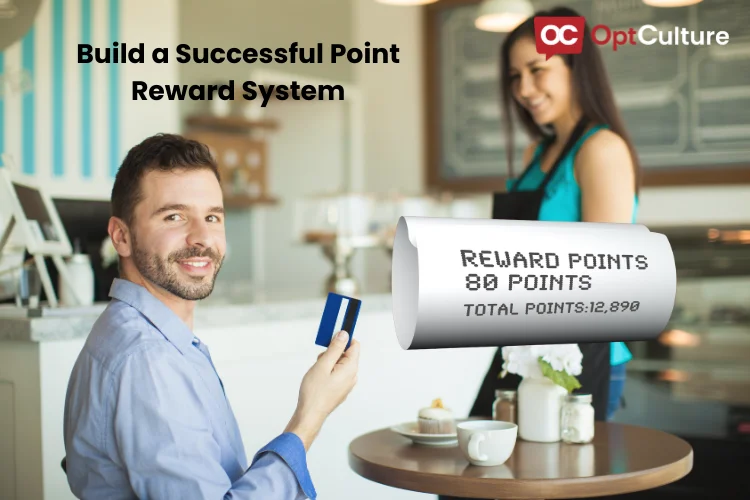
A Comprehensive Guide on How to Build a Successful Point Reward System
Introduction
In the competitive world of business, keeping employees motivated and customers engaged is a critical challenge. An effective tool to address this is the implementation of a point reward system. Whether it’s enhancing customer loyalty or boosting employee morale, a well-structured point reward system for employees or customers can make a significant difference. This guide delves deep into the nuances of creating such a system, offering a roadmap for those eager to implement an employee recognition points system or a points and rewards system for their organization.
Understanding Point Reward Systems
What is a Point Reward System?
A point reward system is a strategy where individuals accumulate points for certain behaviors or achievements. These points can later be exchanged for various rewards. In a corporate setting, a point reward system for employees—also known as an employee recognition points system—is designed to acknowledge and incentivize staff contributions. It’s an effective method to enhance employee engagement, recognize individual achievements, and foster a positive workplace culture.
Types of Point Reward Systems
Points and Rewards System: Predominantly seen in customer loyalty programs, this system allows customers to earn points through purchases, which can be redeemed for rewards or discounts.
Employee Recognition Points System: This is tailored for employee engagement, rewarding employees for specific milestones, performance achievements, or exceptional behavior.
Membership Point System: Used by various clubs or organizations to reward members for their loyalty or active participation.
How to Create a Point Reward System
Step 1: Define the Objectives
The first step in creating a points-based reward system is to clearly define its objectives. What is the end goal? Is it to increase sales, enhance team productivity, improve customer retention, or boost employee morale? A well-defined objective will not only guide the design of your point system but also help in measuring its effectiveness later on.
Step 2: Establish a Points Structure
The next crucial step is to establish a points structure. This involves deciding how points are awarded and the actions or behaviors that warrant these points. For an employee points reward system, points might be allocated for achieving sales targets, completing training modules, exceptional teamwork, or innovation. It’s important to ensure that the way points are awarded is transparent, fair, and aligns with your organizational values.
Step 3: Choose Rewards
Selecting the right rewards is key to the success of a point-based reward system. Rewards must be desirable and relevant to the participants. For an employee recognition points system, options might include extra vacation days, gift cards, public recognition, or even professional development opportunities. The key is to offer a variety of rewards to cater to different preferences.
Step 4: Communicate the System
Effective communication of how to create a point system for rewards is crucial. All participants should be made aware of how the system works, how points can be earned, and how they can be redeemed. Clear communication helps in ensuring that the system is understood and embraced by everyone involved.
Step 5: Implement and Monitor
After launching your points reward system, it’s important to monitor its effectiveness. Regularly check if the system is meeting its objectives, and be open to making adjustments based on feedback and performance metrics.
Setting Up a Points-Based Reward System for Different Contexts
For Employees
When considering how to set up a points reward system in an employment context, it should align with the company’s culture and values. A points-based incentive program could include components like an ‘Employee of the Month’ award, team-based challenges, or recognition for individual achievements.
In a point-based reward system for employees, it’s crucial to ensure fairness and transparency in how points are awarded and redeemed. This system should be designed to motivate and not to foster unnecessary competition or dissatisfaction among employees.
For Customers
In a customer-focused membership point system, the focus should be on creating a seamless experience where points can be easily earned and redeemed. The incentive point system should offer incentives that encourage customers to return, such as exclusive discounts or early access to new products.
Examples and Samples
Points-Based Reward System Sample: An example is a system where employees earn points for each sales target achieved, with an online leaderboard to track and display performance.
Point System for Employees Performance: This could involve awarding points based on meeting or exceeding specific key performance indicators (KPIs), with the accumulated points leading to different levels of rewards.
Employee Points Reward System Examples: A practical example might be a retail company offering points for exceptional customer service. In contrast, a tech firm might reward innovation and effective problem-solving skills.
Implementing a Point System on a Website
For those looking to digitalize their reward system, implementing a point system website involves integrating a point tracking and redemption system into the company’s intranet or a dedicated online platform. This digital approach can offer real-time tracking, greater accessibility, and an enhanced user experience.
Conclusion
Building a successful point reward system requires thoughtful planning, clear objectives, and regular monitoring. It’s a versatile tool that can significantly enhance employee engagement and customer loyalty. Whether you aim to implement a point-based reward system for employees or a customer loyalty program, remember the key is to keep it relevant, fair, and transparent.
Unlock the secrets to building a successful point reward system with our comprehensive guide. OptCulture, your trusted ally in customer engagement, invites you to schedule a demo and elevate your loyalty program to new heights.





